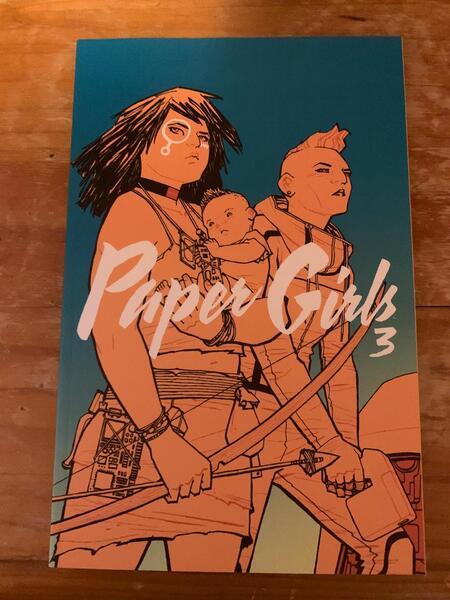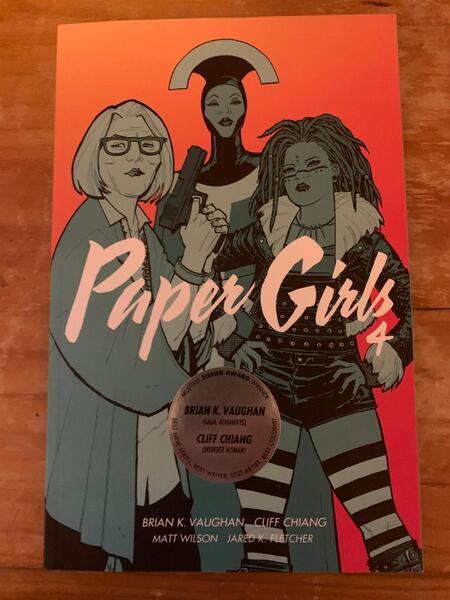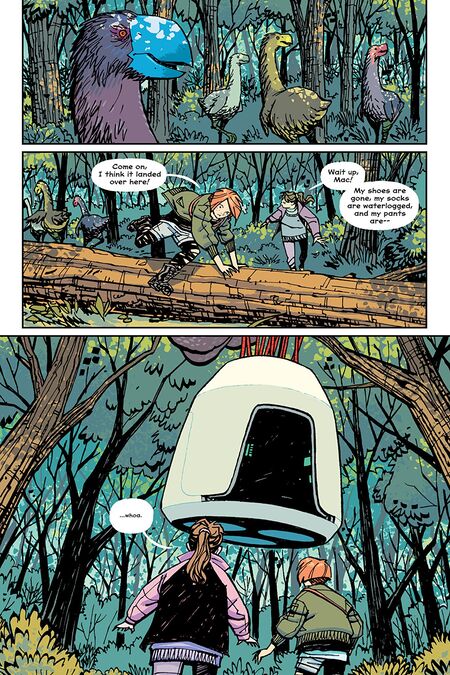And this, ladies and gentlemen and non-binary figures from an indeterminate future, is why we can’t have nice things.
Specifically, time travel.
Almost from the moment Qanta Braunstein, born on the very auspicious day of 25 November 2016 – it’s the birth day, if not year, of this reviewer and must noted, and quite possibly, celebrated accordingly – invented time travel, humanity found a way to weaponise it, with a war underway between the Old Timers, who will brook no interference in the timeline at all, and those from a far glimmering future where the idea has taken route that it’s fine to tinker with time if it rids humanity of blots on our collective soul like 9/11.
Talk about an immense philosophical difference which has seen various epochs laid to waste in pursuit of one side or another’s stated beliefs, a titanic battle of titanic and fervent religiosity that has swept up four very young women from a 1988 Cleveland suburb called Stony Stream in its merciless grasp.
They are the eponymous Paper Girls, by Brian K. Vaughan and Cliff Chiang (published by Image Comics) of a remarkable graphic novel series which sees Erin, MacKenzie, KJ, and Tiffany swept up in time slip after time slip where they are variously regarded as terrorists, innocent bystanders in over their heads (this one) or weird strangers who defy what those in a particular timeframe know about the world.
As with just about every time travel series, they simply want to get home, but as they have discovered so far in volumes one and two, something which is reinforced in volumes three and four, that is far easier said than done.
Whether they are in 11,706 BCE dealing a woman who simply wants her son to be safe from his three murderous fathers and weird time portals hovering in thin air, or in the early hours of 1 January 2000 when Y2K has come true and the world is a melted down mess, all four girls keep coming across a thousand different obstacles to stop them going back to whatever used to pass for normal.
The thing is, as we saw in the previous volumes, that “normal” likely no longer exists with the warring factions – who is good and who is bad depends on where you sit with the old axiom that one person’s terrorist is another person’s freedom fighter very much applying – doing whatever they feel they have to to achieve their aims.
The result, as Erin, MacKenzie, KJ, and Tiffany, know all too well by now, are not pretty.
Two things strike you again and again when you’re reading Paper Girls.
The imaginative ideas behind the series are long and depth and brilliantly realised with some well-worn tropes about time travel such as don’t interfere in the timeline and get home however you given a fresh, new shiny and highly emotionally resonant sheen.
In fact, so vividly portrayed are all of the characters, both our four plucky though understandably freaked out protagonists who are doing a huge amount of growing up very fast and recurring people who are either good or bad or who the hell can tell, and so finely told the story that you feel every last impact on the psyche of each of the events in the narrative.
Far from being just another geewhiz blockbuster tale of time travel, and don’t misunderstand but Paper Girls is all that in a way that would make Spielberg, with his love of 1950s serial cinema proud, the series is packed full with all kind of impactful humanity as the girls don’t just scramble to figure out what’s going on and try to find a way to survive it, but also try to work out who they are in their weirdly intense slice of sped-up emotional maturation.
There’s a lot going on between some vibrantly illustrated action set pieces involving giant mechs populated by those from both sides and ancient wildlife and people trying to figure out what all this future tech is that keeps plopping into their pristine world, and it’s not just one addictively captivating narrative set piece being set in front of another.
The girls are coping with an extraordinary amount of new info and trying to make sense of it the best they can, which explains the pop culture references which happily litter the story from Clan of the Cave Bear to Star Trek, The Flintstones and America’s Most Wanted, and the way in which Vaughan and Chiang marry crisp dialogue and sharp storytelling with artwork so vividly alive you feel like you could plunge straight on into it.
Both words and art are vivaciously realised and it’s hard not to be wholly and completely sucked into Paper Girls, not simply because it’s told and illustrated so damn well, but here are four lead characters (and some supporting ones too) who are affected by the events they live through and who aren’t simply set pieces in a blockbuster tale but real people coping with what feel like unreal events and who are trying to come out the other side if only they can figure out how to do it.
It’s storytelling of the highest order and it marks Paper Girls as something rather special, proof that you can tell a BIG story and not lose on iota of emotional intimacy and raw, affecting humanity along the way.
(courtesy Image Comics)


